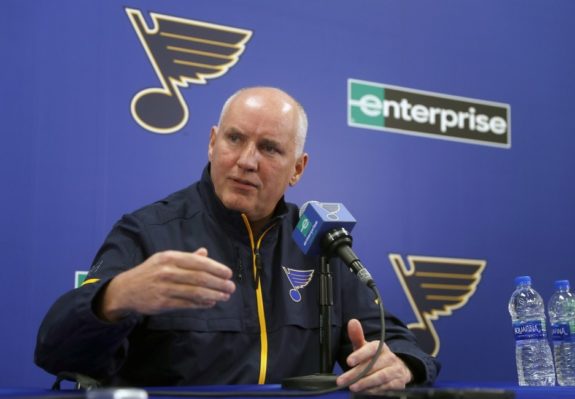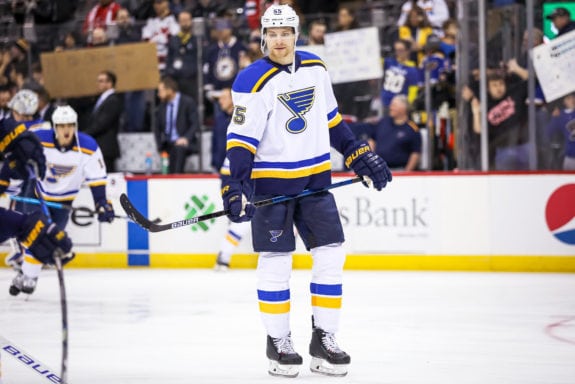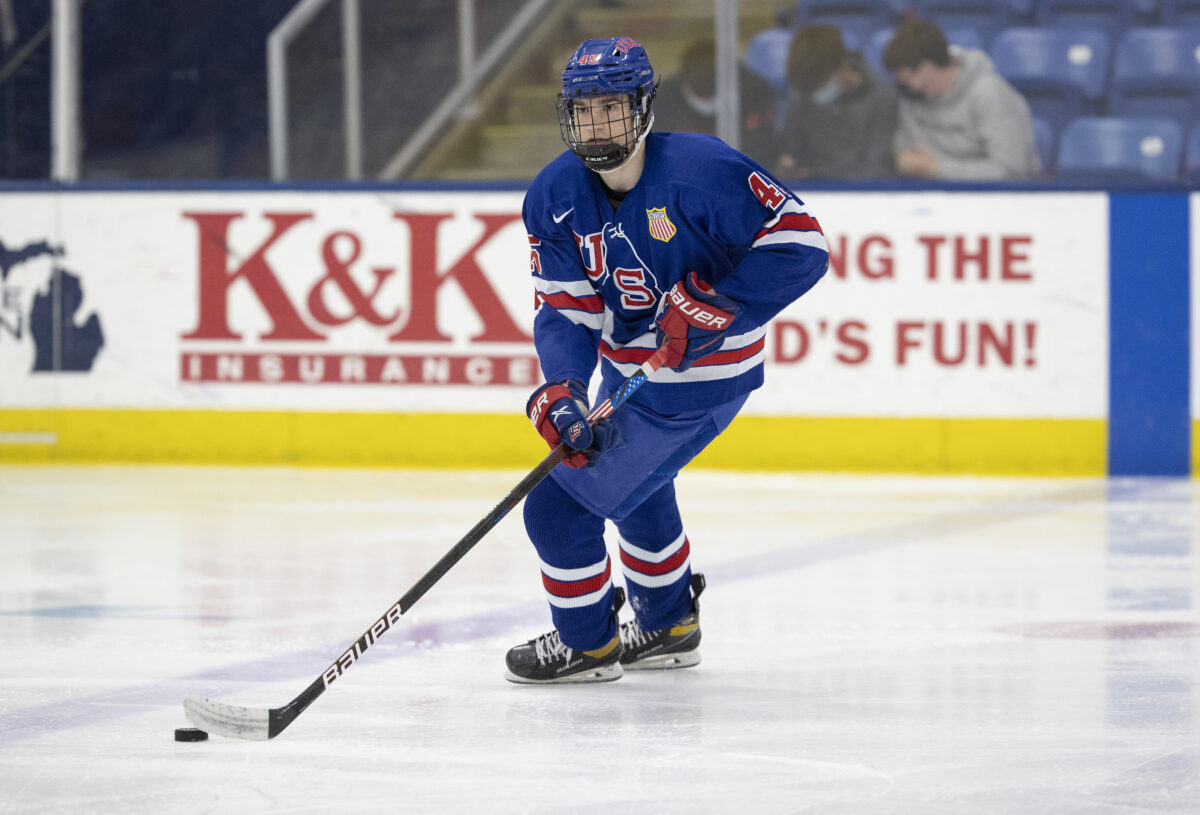The St. Louis Blues find themselves in a precarious position. Currently occupying the fifth spot in the highly competitive Central Division standings, they are tied with the surging Minnesota Wild, leaving little room for error as the season progresses. Complicating matters further is the tight race in the Pacific Division, where teams like the Los Angeles Kings and Calgary Flames are vying for wild card spots, intensifying the pressure on the Blues to secure their position in the standings. With the playoff race heating up and every point crucial, the Blues face a challenging predicament as they navigate through a fiercely competitive league.

As the trade deadline approaches, the Blues face a stark reality: despite the talent on their roster, they lack the depth and consistency needed to compete with the league’s top teams. When comparing their roster to powerhouse organizations, the discrepancy in quality becomes evident. Additionally, the Blues’ streaky performance, characterized by intermittent successes and failures, highlights their inconsistency on the ice.
While they excel in certain aspects, like winning battles along the boards, executing precise northward passes, and taking shots on goal, this performance is not sustained consistently enough. As a result, the Blues find themselves trailing behind teams with realistic Stanley Cup aspirations. The looming trade deadline presents an opportunity for the Blues to address their shortcomings and make necessary changes to bolster their competitiveness moving forward.
What Does the Trade Deadline Hold for the Blues?
It’s widely known throughout the NHL that the Blues are fielding offers for forward Pavel Buchnevich. Reports from NHL insider Elliotte Friedman suggest that the Blues are seeking a significant return for him, including a first-round draft pick, a top-tier prospect, and a reliable NHL player. This potential trade package has generated considerable interest among Blues fans, who recognize that the team’s chances of contending for the Stanley Cup this season are slim. Instead, focusing on bolstering their prospect pipeline appears to be the organization’s priority.
While the Blues have a reputation for competitiveness and have achieved success in the past, they currently find themselves in a challenging position. With fluctuating performances and the Stanley Cup out of immediate reach, the team is looking to make strategic moves to secure their future success. As the trade deadline approaches, there are three key developments to watch closely regarding the Blues’ trade activity.
Blues Fans Say Goodbye to Buchnevich
Trading Buchnevich at this stage of the season appears increasingly probable for the Blues, given the significant value he could fetch on the trade market. The potential return could include cornerstone pieces that bolster the team’s roster while aligning with a more financially prudent strategy.
With Buchnevich having just one more year on his current contract, his next deal is expected to be lucrative, considering his integral role within the organization. However, recent contract extensions, such as William Nylander’s with the Toronto Maple Leafs, highlight the escalating costs in the NHL, making long-term deals increasingly expensive.
Buchnevich’s versatility across various game situations enhances his bargaining power during contract negotiations. While he may warrant a contract similar to Robert Thomas and Jordan Kyrou’s, committing to a high-value, long-term deal for a player approaching 30 years old could present challenges for the Blues in the future.
Acquiring draft picks, prospects, and a young NHLer in exchange for Buchnevich would not only bolster the team’s depth but also provide financial flexibility and enhance the pipeline for long-term success. Thus, exploring trade options for Buchnevich aligns with the Blues’ goal of building a sustainable and competitive roster moving forward.
Related: Blues’ Realistic Trade Partners for Pavel Buchnevich
Moreover, the current landscape of the NHL underscores the importance of strategic roster management. The league’s salary cap constraints and the trend toward long-term, high-value contracts necessitate careful consideration of each player’s financial impact on the team’s future.
By trading Buchnevich for assets that can contribute to both immediate and long-term success, the Blues can position themselves as contenders in the years to come. This approach allows them to maintain flexibility in managing their salary cap and roster composition, mitigating the risk of being burdened by cumbersome contracts.
Furthermore, investing in draft picks and prospects provides the Blues with a chance to develop young talent within their system, fostering a sustainable model for sustained competitiveness. This focus on building from within ensures that the team remains competitive while also maintaining financial stability in the face of evolving market dynamics.
In conclusion, trading Buchnevich presents the Blues with an opportunity to optimize their roster composition and financial flexibility. By leveraging his value on the trade market, they can acquire assets that strengthen their depth and position them for success in the long term, aligning with their overarching goal of building a competitive and sustainable franchise.
Blues Make a Blockbuster Move Involving Buchnevich and Parayko
Before this season, the idea of trading Colton Parayko would have been met with unanimous approval from many fans. However, his significant improvement in defensive awareness and positioning has shifted perceptions of the 30-year-old defenseman.

Parayko has notably enhanced his awareness in front of the net, an area where he previously struggled. His tendency to obstruct his own goalies by inadvertently screening them with his large frame was a concern for fans. This season, however, Parayko has shown marked improvement in this aspect of his game.
According to JFresh Hockey, Parayko boasts a defensive efficiency rating of 89 percent, which encompasses his defensive impact, breakouts, and breakups. He has excelled in executing the Blues’ zone defense strategy, effectively pinning opponents along the boards and showcasing strong backchecking abilities. Additionally, his stick work and ability to disrupt opposing players have been key contributors to his defensive success. Furthermore, his underrated skating ability has significantly contributed to his overall defensive performance. Despite Parayko’s improved play, his name has surfaced in trade rumors reported by reputable sources such as Friedman.
During the Feb. 13 Blues-Toronto Maple Leafs game, Friedman mentioned that Parayko is a top trade target for the Maple Leafs. Although this was specific to the Maple Leafs, it implies general interest in the 30-year-old defenseman. While a standalone trade may be surprising, given the Blues’ potential retooling and Parayko’s team-friendly contract, his inclusion in a larger package deal cannot be discounted, reflecting general manager Doug Armstrong’s willingness to listen to offers.
Armstrong may seek to address the team’s needs by making significant moves, potentially involving Parayko, fellow defenseman Torey Krug or Justin Faulk, and forward Buchnevich. While such a trade could be complex due to salary considerations, it remains a possibility given the ongoing trade speculation surrounding Parayko and Buchnevich.
While the notion of trading Parayko may have seemed improbable in the past, his improved performance this season, coupled with the Blues’ potential retooling efforts, has made his inclusion in trade discussions a realistic possibility. As the trade deadline approaches, the possibility of a significant trade involving Parayko and other key players remains a storyline worth monitoring.
The Blues Don’t Make Any Moves at the Trade Deadline
At the World Juniors, the Blues’ prospects showcased their potential, providing a glimpse into the organization’s promising future. Players like Jimmy Snuggerud, Dalibor Dvorsky, Theo Lindstein, and Otto Stenberg demonstrated their skills, igniting optimism among Blues fans. While the current roster may not boast overwhelming talent, there’s a compelling argument for prioritizing long-term growth over immediate gains.

Opting to maintain the status quo could yield significant benefits for the Blues down the line. If prospects like Snuggerud transition to the NHL and continue their development alongside promising talents like Zachary Bolduc and Jake Neighbours, while Zach Dean further refines his game, the team’s depth could flourish. Coupled with the established star power of players like Thomas, Kyrou, and Buchnevich, the Blues could evolve into formidable contenders without making drastic moves.
Ultimately, the decision whether to make a move or trust in the current roster and prospects hinges on the balance between short-term success and long-term sustainability. It’s a dilemma faced by many NHL teams, and the Blues must carefully weigh the potential risks and rewards before making any significant roster decisions.
Blues Are in a Risk-and-Reward Situation
The Blues face a pivotal decision regarding their roster strategy. While making transactions to bolster their future is a viable option, the potential development of prospects like Snuggerud, along with the continued growth of players like Bolduc and Neighbours, could alter the team’s outlook significantly.
If these young talents progress as expected, the Blues may find themselves in a stronger position without needing to make major moves. However, the allure of immediate impact acquisitions cannot be ignored, especially considering the team’s aspirations for success in the present season.
Ultimately, the Blues’ decision will likely be influenced by a careful evaluation of both short-term competitiveness and long-term sustainability. With every option on the table, including the possibility of retaining key players like Buchnevich and Parayko, the organization must weigh the potential benefits against the risks associated with any roster changes.
In the end, only time will tell which path the Blues choose to pursue. However, one thing is certain: the decisions made in the coming weeks will have a profound impact on the team’s trajectory and its quest for future success.
